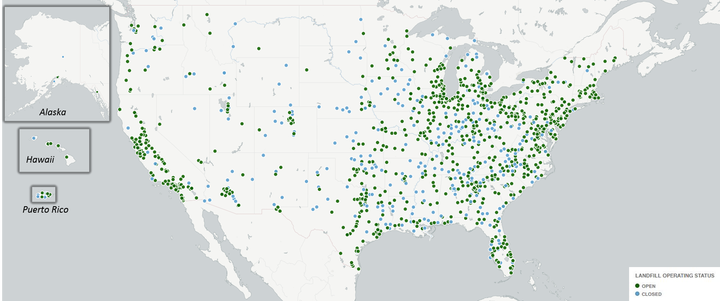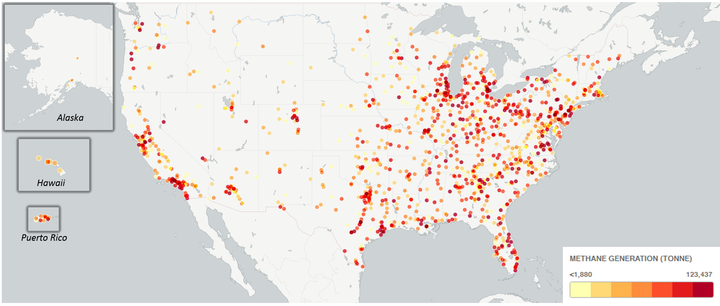If you worry that Americans produce too much garbage, you won’t get much reassurance from a new study published in the journal Nature Climate Change.
The study shows that landfills across the country are taking in more than twice as much solid waste as the government thought: a whopping 262 million tons of food scraps, paper products, and the like in 2012 rather than the 122 million tons that the EPA had estimated for that year.
In more personal terms, the new estimate suggests that our landfills are taking in roughly five pounds of solid waste per person per day, according to the Associated Press.
(Story continues below map.)

What explains the jarring discrepancy between the new estimate and EPA’s? It’s all about methodology.
The EPA traditionally has based its estimate on reports from businesses, industry associations, the U.S. Census, and other sources, according to a written statement released by Yale University.
Instead, the researchers behind the new study went directly to the operators of more than 1,200 municipal solid waste landfills across the nation, using four years of data through 2013. That makes the new estimate a “superior number,” Jon Powell, a Ph.D. student in Yale’s department of chemical and environmental engineering and the lead author of a paper describing the research, said in the statement.
“I am excited about the possibilities that the quality-assured, measured data we were able to leverage in this study holds in terms of informing our path forward to manage wastes more sustainably,” Powell told The Huffington Post in an email.
The nation isn’t about to run out of landfill space anytime soon. In fact, the new research suggests that the average landfill has enough capacity for another 30 to 40 years of use.
But the landfills that have more space can be far away from the cities that need their services, Dr. Morton Barlaz, head of the department of civil, construction and environmental engineering at North Carolina State University, told LiveScience. Barlaz was not involved in the new study.
And then there’s the fact that landfills give off lots of gas—including methane, which contributes to global warming. In fact, the decomposition of municipal waste in landfills is considered one of the world’s largest sources of human-produced methane emissions, according to the statement.
(Story continues below map.)

The new study may encourage researchers to develop better ways to curb the release of methane from landfills, according to Science magazine.
What else can be done to mitigate our garbage problem? According to Powell, "There are many interconnected factors that impact the production of waste--mass of raw materials used, durability of goods, individual behavior, to name a few."
Time to reconsider how much you throw away every day?
